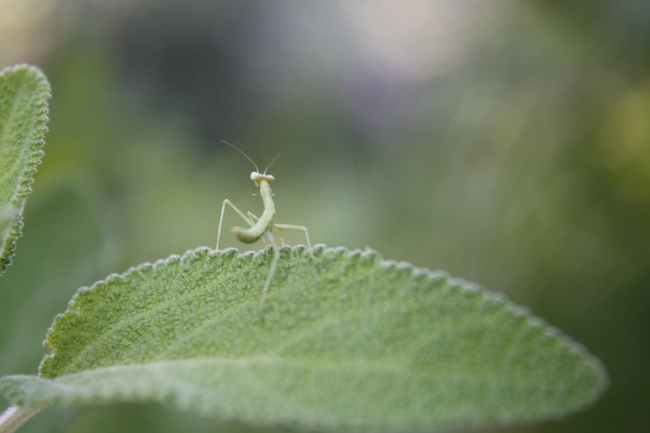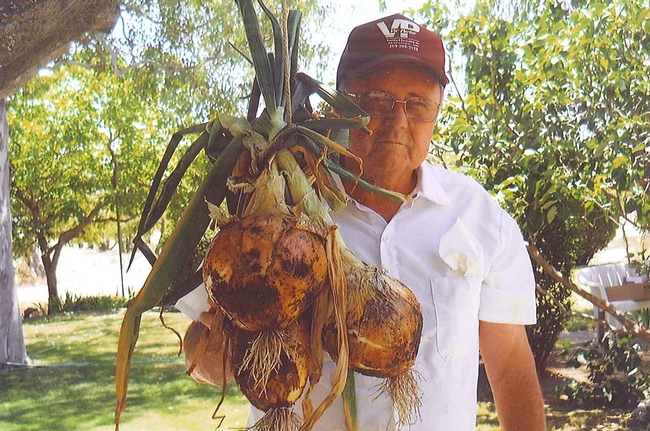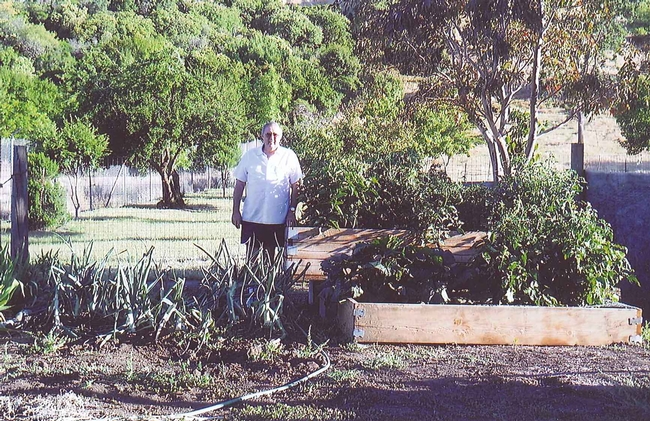Posts Tagged: manure
Learning My N-P-K's
I love pouring over seed catalogs and gardening magazines. I greatly enjoy picking my sweet peas and harvesting my chard and lettuce. I relish writing about gardens and sitting at our Master Gardener's table at the Vacaville Farmers Market on a sunny Saturday morning, talking with home gardeners about their plant problems and chatting with fellow Master Gardeners.
What I do not love has been trying to learn the technical side of gardening--the chemistry, the science of what makes it work. I got as far as biology in high school, but became turned off to science at the dissection of that poor frog.
However, as an adult Master Gardener, it is time I looked reality in the eye, planted my feet firmly on my nutrient-poor soil, and learn some science.
I have decided to to start with nitrogen. Why? Because it is the first number listed on fertilizer labels, and I really want to understand what that means.
Researching nitrogen, I discovered it is the 5th most common element in the universe and makes up 78% of the earth's atmosphere. Bringing it down to more useful information for a gardener, nitrogen is an essential nutrient that is a naturally an inert gas which needs to be "fixed"or drawn out of the air and converted to a form usable to a plant. Simply stated, plants without sufficient nitrogen display poor or stopped growth and/or pale green or yellowing leaves due to the fact that they are not able to make sufficient chlorophyll. Therefore, photosynthesis cannot occur.
One can recognize nitrogen deficiency by noticing spindly stems, the pale or yellowing of leaves, especially of the most mature ones, and wilting of sufficiently watered plants, even if the weather is not overly warm. It is good to know which plants are most commonly are effected by nitrogen deficiency so as to keep an eye out. These are fruit trees, vegetable plants, and broad leafed evergreens.
The good news is that gardeners can manage the nitrogen content of their soil several ways. One method is adding organic materials by actually planting crops in the fall or very early spring that fix nitrogen. These would be legumes used as a cover crop, including alfalfa, clover, hairy vetch, or peas, as these plants actually work the bacteria in the soil to absorb nitrogen from the air and place it in the tiny root nodules. This is called "nitrogen fixation". These plants, when mature, are to be chopped up and dug into the soil.
Another material to get nitrogen into the soil is manure from grass eating animals. Let the manure age at least 6 months before using to prevent burning of your plants. Poultry manure is also a good source, but let it air out for 4 months before using. Bone meal is a fast acting fertilize, but can also burn plants. Mix with water or dig it lightly into the soil. Crab meal, feather meal, alfalfa meal, soybean and cottonseed meal are all also recommend. Just be very sure to do a little research, know what your plant needs, and follow directions exactly.
So what does all this have to do with that first number on the fertilizer bag? There are always three numbers, and those numbers simply tell you what the percentage is of each of the three main nutrients found inside the box. The first number is for nitrogen, represented in chemistry by a capital "N". The second number is for phosphorus, represented by a "P", and the third number, represented by a "K" , tells you the percentage of potassium. So if you are wanting a deep green lawn or lush, green kale, you would use a product with a high first number.
So what would be the reasoning for looking for a higher second or third number? To find out, read my blog next month as I explore phosphorus. Meanwhile, work on memorizing N-P-K along with me, and you will be a tad closer to being a real science type.

flowers and bugs 6 2011 025
Bird Poop
Chicken manure compost is an environmentally friendly and effective organic garden fertilizer. I use chicken manure to amend my soil and add usable nutrients to it at the start of the planting season. As a vegetable gardener, I treat my soil with plenty of chicken manure compost before I plant my crop in order to help provide a good start to the garden. I turn lots of chicken manure into the soil before I place my starters. After I have all the plants in the ground I add a thin layer of chicken manure to top my soil as well. I notice that applying in this fashion allows for extended release of the nutrients. In comparison with chemical fertilizers, manure is more cost effective and can be purchased inexpensively almost everywhere. Chicken manure is most preferred over steer or rabbit manure for its well rounded nutrient spectrum after it has composted and been prepared for garden use. Chicken manure is the richest variety containing the highest N-P-K ratios in comparison with other farm animal manures. Chicken manure subjectively seems to have the least amount of “odor” when compared to the other varieties making it more desirable to work with, if you will. An important tip, gardeners should only use manure that has already been composted for garden use. If the manure is not broken down and composted before use there is a very strong nitrogen content that will “burn” and can potentially damage or destroy your plants. Garden variety chicken manure is sold at all the home improvement retailers and has been composted and is ready for you to use immediately. Chicken manure will be the reason you are almost certain to have someone caught noticing your well-grown garden while asking you, “do you smell that?”

chicken
For the Love of Onions
Have you ever seen an onion so large that it looked like a melon? Our good friend, Evon, has mastered growing huge onions right here in Vacaville and has been doing this for 24 years. He appears at our front door in June or July, gifting us with the biggest onions ever! One onion will last us for weeks, often longer! He mails his onions to friends in New York, San Diego and Mexico, no small feat when they weigh up to 4 pounds each.
What is his secret? His onion sets are purchased in early November at a local nursery. He prefers the Stockton Red’s and yellow onions. They are planted deep and 8 inches apart, in a raised bed that has been filled with compost and steer manure. These amendments are rototilled together. The compost he uses is available from April 1st to October 1st at Vacaville landfill, (free, if you have Vacaville garbage service). When the top of the soil dries out, the onions need to be watered thoroughly. In about 8 months, the onion tops will fall over and at that point they are ready to pull from the soil and eat.
When our group of classmates get together to celebrate the 4th of July, the hot topic is Evon’s monstrous, trophy onions and what the biggest one weighed this year!

Evon and his onions. (photos by Sharon Rico)

Evon in the garden.

